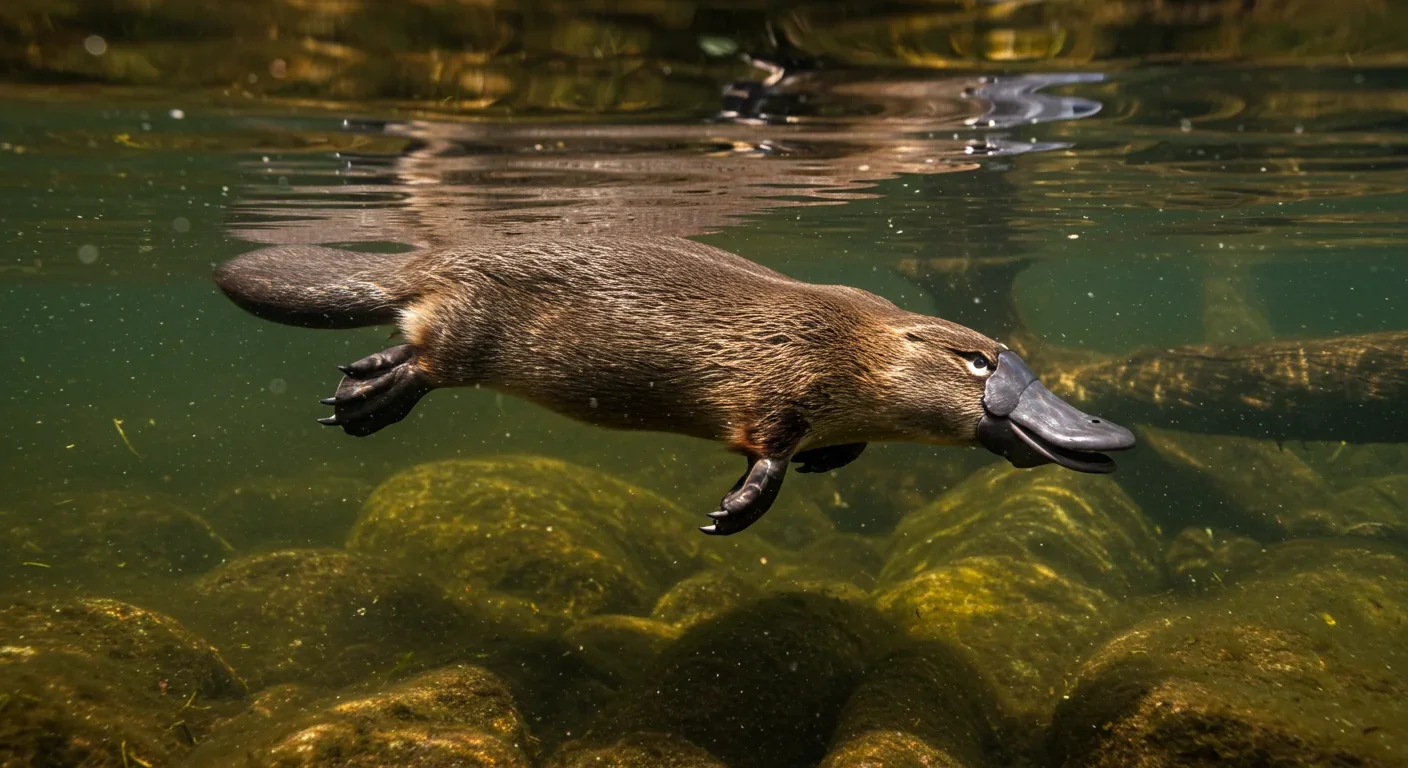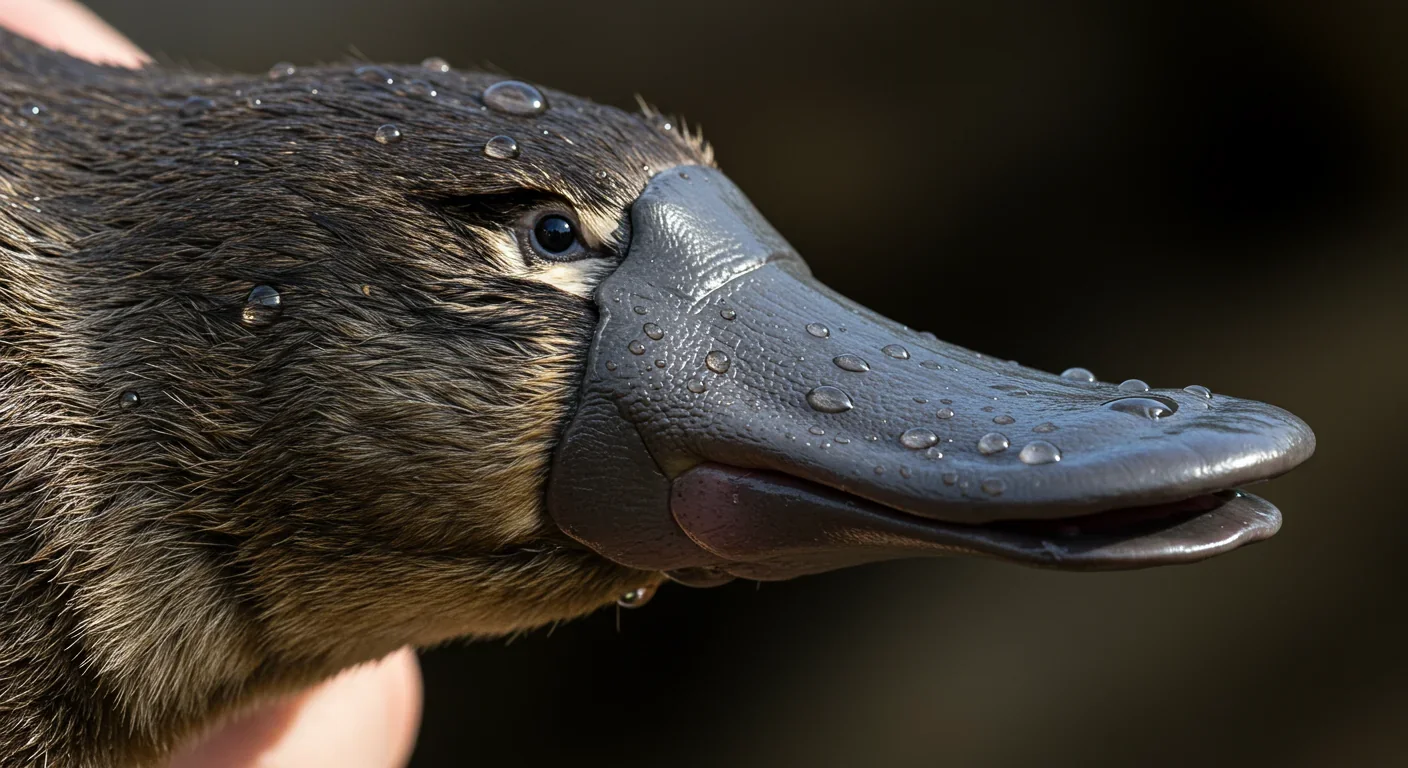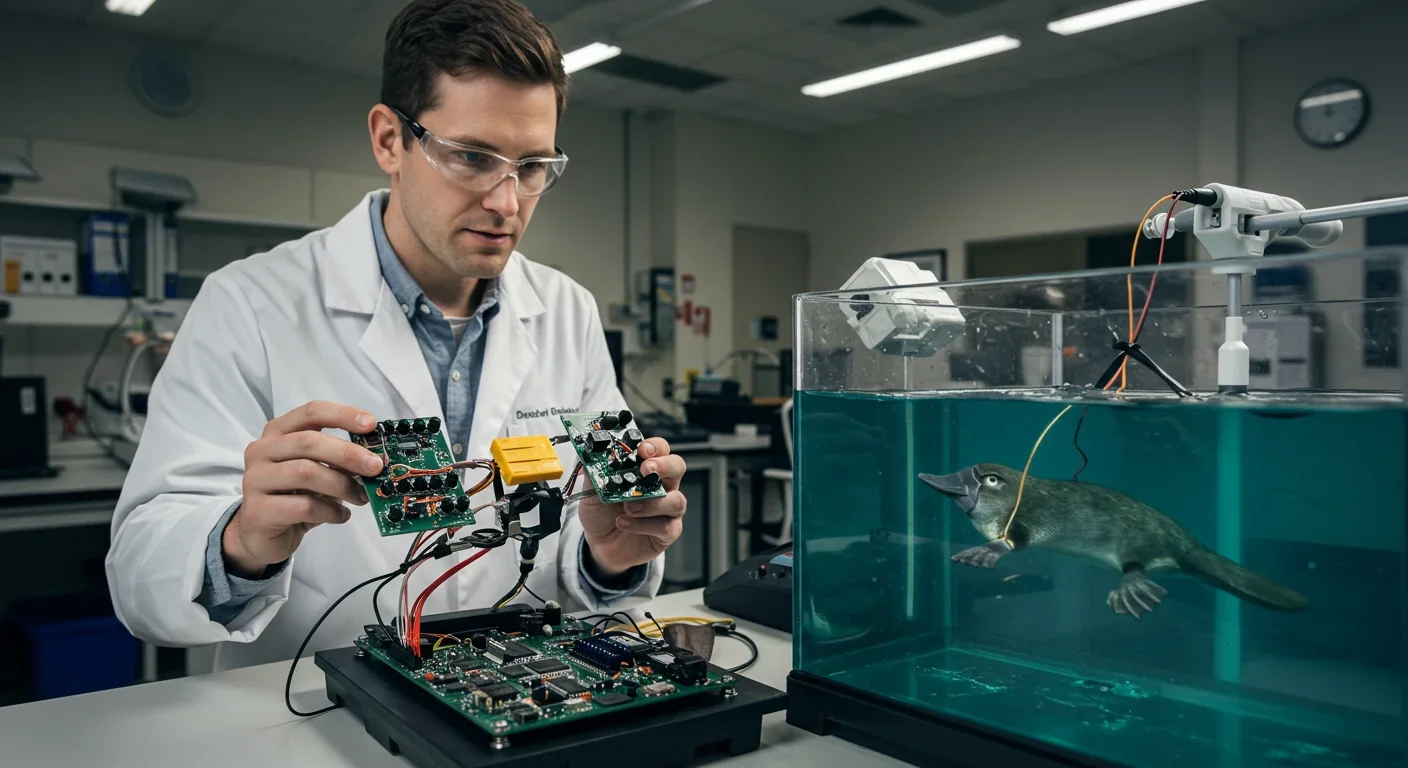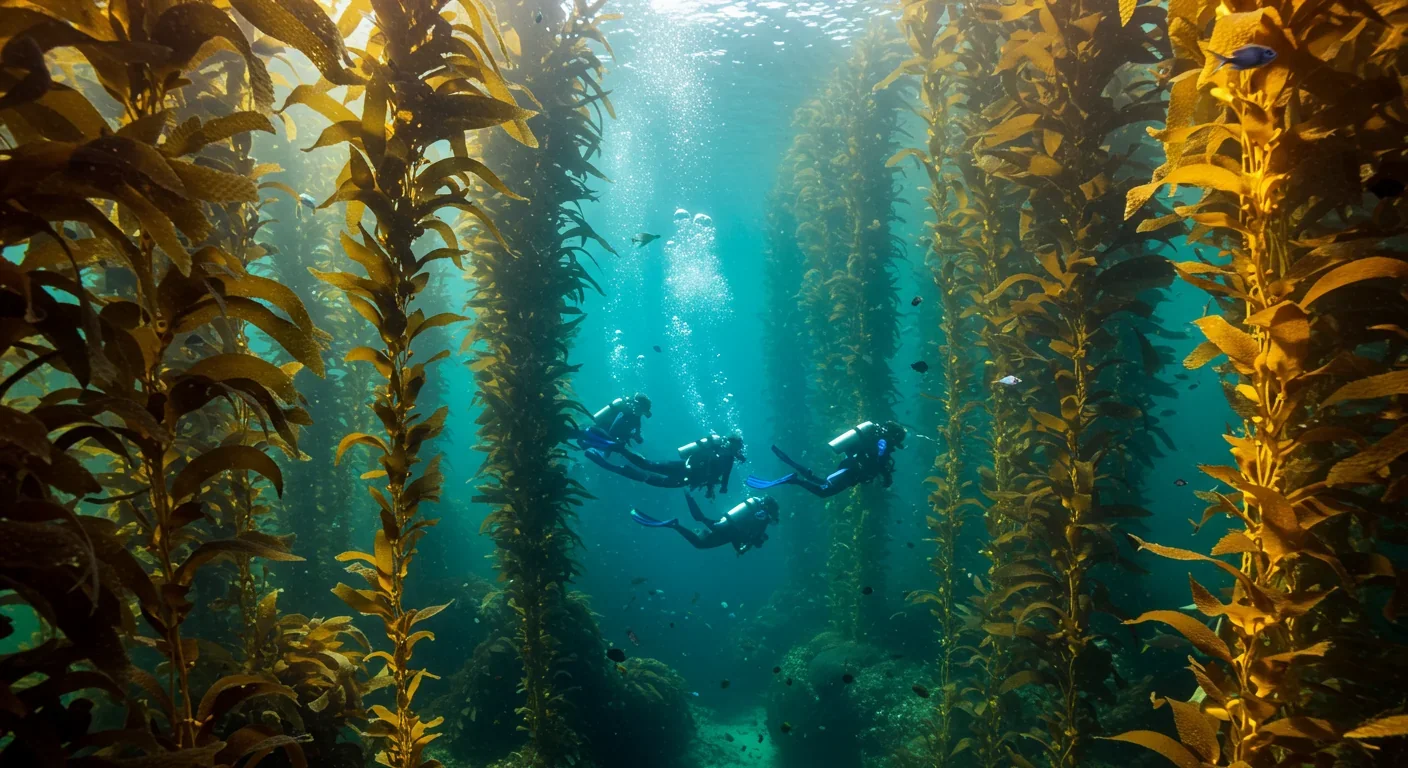Why Crows Bring Gifts: The Science of Avian Intelligence

TL;DR: The platypus hunts in complete darkness using 40,000 electroreceptors in its bill to detect the faint electrical signals from prey, combining this with pressure sensors to judge distance with remarkable precision. This unique mammalian ability is now inspiring the development of advanced underwater sensors and robotics.

In the murky streams of eastern Australia, a creature hunts in total darkness. Eyes closed. Ears sealed. Nostrils shut tight. The platypus navigates its underwater world not with sight or sound, but by sensing the invisible electric whispers of life itself. Every muscle twitch of a shrimp, every wiggle of a worm, generates a faint electrical field, and the platypus reads these signals like we read street signs. This isn't science fiction. It's one of evolution's most remarkable achievements, and it's reshaping how we think about building sensors for tomorrow's underwater robots.
When Europeans first encountered platypus specimens in 1798, they thought it was a hoax. A duck's bill grafted onto a beaver's body? Impossible. But the joke was on the skeptics. The platypus wasn't just anatomically bizarre, it possessed a sensory superpower that wouldn't be discovered for another 188 years.
In 1986, researcher Henning Scheich and his colleagues finally proved what local observers had long suspected: the platypus could detect electricity. Their experiments showed that a platypus would strike at an "artificial shrimp" if a small electric current passed through it, even with no visual or chemical cues present.
The platypus bill isn't just a quirky appendage. It's a sophisticated sensor array packed with approximately 40,000 electroreceptors arranged in neat front-to-back stripes. Think of it as nature's version of a phased-array radar, constantly scanning for the faint electromagnetic signatures of hidden prey.
These receptors are incredibly sensitive, responding to electrical signals as faint as 20 microvolts per square centimeter. To put that in perspective, that's roughly equivalent to detecting the voltage from a watch battery positioned several meters away underwater. In the electrical noise of a river ecosystem, that level of sensitivity borders on the supernatural.
The electroreceptors themselves are modified mucous glands, each containing free nerve endings innervated by the trigeminal nerve. When prey muscles contract to create movement, whether it's a crayfish flexing its tail or a larva burrowing into sediment, they generate tiny electrical fields. These fields propagate through the water and stimulate the platypus's receptors.
But here's where it gets really clever. The platypus doesn't just have electroreceptors. Its bill also contains about 60,000 mechanoreceptors that detect pressure changes and water movement. The animal's brain fuses these two sensory streams in the tactile somatosensory cortex, some neurons receiving input from both types of receptors simultaneously.
This dual-mode sensing solves a critical problem: judging distance. Electric signals travel through water nearly instantaneously, while pressure waves move much slower. By measuring the delay between the electrical signal and the mechanical pressure wave, the platypus can calculate exactly how far away its prey is hiding. It's biological trigonometry, performed in real-time by a brain the size of a walnut.
The directional sensitivity of the receptor array is equally impressive. The arrangement is tuned to be most sensitive to signals coming from the sides and below, precisely where benthic invertebrates hide in stream sediments. When hunting, platypuses make rapid side-to-side head movements called saccades, sweeping the bill through the water to compare signal strength across the receptor array and pinpoint prey location with remarkable accuracy.
Electroreception isn't unique to the platypus. Sharks have had it for over 400 million years, using specialized organs called ampullae of Lorenzini. Electric fish in Africa and South America evolved it independently, using it both to sense prey and communicate. But among mammals, electroreception is extraordinarily rare. Only monotremes (the platypus and echidnas) and the Guiana dolphin possess this ability.
What makes the platypus case fascinating is that its electroreceptors evolved from completely different anatomical origins than those in fish. While sharks use specialized jelly-filled pits, the platypus repurposed mucous glands and trigeminal nerve endings. This is convergent evolution at its finest: different starting materials, same functional solution.
The evolutionary pressure that drove this development is clear. Platypuses are crepuscular and nocturnal hunters, foraging in murky water where visibility drops to near zero. In these conditions, vision becomes useless. The ability to sense electrical fields turned a challenging environment into an abundant hunting ground, allowing platypuses to exploit prey that other predators couldn't locate.
Understanding electroreception transforms how we interpret platypus behavior. When a platypus dives, typically for 30 to 40 seconds, it's not fumbling blindly along the riverbed. It's conducting a systematic electromagnetic scan.
The animal closes its eyes, ears, and nostrils completely while submerged, relying entirely on its bill to navigate and hunt. It sweeps the bill side to side in a regular pattern, building a mental map of electrical hotspots. When a strong signal appears, the platypus homes in, using the electro-mechanical timing difference to gauge how deep to dig.

The diet reflects this specialized hunting strategy. Platypuses primarily consume insect larvae, freshwater shrimp, crayfish, annelid worms, and small fish. All of these prey items are either bottom-dwelling or burrow into sediment, exactly the niches where electroreception provides maximum advantage. A platypus can detect prey movements from 15 to 20 centimeters away, even when the prey is completely buried.
What's particularly impressive is the speed and efficiency this enables. Platypuses need to consume roughly their own body weight in food each night to maintain their metabolism. Without electroreception, this would be nearly impossible in dark, turbid water. With it, they're devastatingly efficient predators.
Placing the platypus's ability in context requires comparing it to other electroreceptive animals. Sharks excel at passive electroreception, detecting the extremely faint bioelectric fields (less than 5 nanovolts per centimeter) generated by fish gills and muscle activity. Their ampullae of Lorenzini are essentially biological voltmeters, optimized for maximum sensitivity.
Electric fish took electroreception further, evolving not just passive detection but active electrolocation. Species like the elephant-nose fish generate their own electric fields and detect distortions caused by nearby objects, creating a three-dimensional electromagnetic image of their surroundings. Some, like the electric eel, weaponized this ability, generating stunning discharges of over 600 volts.
The platypus sits between these extremes. Its sensitivity isn't as extreme as a shark's, and it doesn't actively generate electric fields like electric fish. But it pioneered something unique: the integration of electrical sensing with pressure sensing for precise distance ranging. No shark or electric fish combines these modalities quite this way.
This cross-species comparison reveals something profound: electroreception has evolved independently at least six times in vertebrate history. Electric catfish, elephantfish, sharks, rays, monotremes, and certain dolphins all developed this ability separately. The fact that evolution repeatedly converged on this solution suggests that detecting electrical fields offers significant survival advantages in aquatic environments.
Scientists didn't study platypus electroreception just out of curiosity. This biological system offers a blueprint for advanced underwater sensors, and engineers are paying attention.
Traditional underwater navigation relies on sonar, cameras, and pressure sensors. But sonar can be fooled by complex acoustic environments, cameras need light, and pressure sensors have limited range. An electroreceptive sensor could fill these gaps, detecting buried objects, mapping conductivity gradients, or locating prey for aquaculture robots.
Researchers are developing bio-inspired electroreceptive sensors based on platypus anatomy. Early prototypes use arrays of electrodes arranged in patterns mimicking the bill's receptor distribution. The challenge is matching biological sensitivity. While engineering can achieve impressive detection thresholds, miniaturizing these sensors while maintaining low noise remains difficult.
The potential applications extend beyond robotics. Electroreceptive sensors could improve underwater mine detection, locate buried cables and pipelines, or monitor bioelectric activity in aquatic ecosystems. Medical devices might adapt similar principles for non-invasive muscle activity monitoring or neural signal detection.
Some researchers are exploring whether understanding platypus neural processing could inform artificial intelligence design. The way the platypus brain integrates multiple sensory streams, filtering noise and extracting meaningful patterns from complex electromagnetic environments, mirrors challenges in signal processing and data fusion. Nature solved these problems millions of years ago, and we're just beginning to decode the solutions.
One of the most intriguing discoveries about platypus electroreception is how the brain processes these signals. Unlike other senses that have dedicated cortical regions, the electrosensory area overlaps with the tactile somatosensory cortex. Some neurons receive input from both electroreceptors and mechanoreceptors simultaneously.
This suggests something remarkable: the platypus doesn't "hear" electricity or "see" it in some alien sensory modality. It feels electricity as a form of touch. The electrical fields generated by prey are perceived as tactile sensations, integrated seamlessly with pressure and texture information from the mechanoreceptors.
This cortical organization makes evolutionary sense. The trigeminal nerve, which innervates the bill's receptors, originally evolved for facial sensation and whisker control in mammals. The platypus essentially hijacked existing neural pathways, adding electroreception to the tactile processing stream rather than evolving entirely new brain regions.
The implications for bio-inspired engineering are significant. If artificial systems can integrate electrical sensing with mechanical sensing using similar computational principles, they might achieve more robust and adaptable perception than single-modality sensors allow.
Despite their remarkable abilities, platypuses face mounting threats. Habitat loss, water pollution, drought, and climate change have caused population declines across their range. In 2020, the IUCN classified the platypus as "near threatened," a significant downgrade from its previous status.
The species' specialized sensory ecology makes it particularly vulnerable. Platypuses require clean freshwater ecosystems with stable prey populations. Agricultural runoff, urbanization, and altered flow regimes from dams all disrupt the invertebrate communities they depend on. Without abundant prey, their energy-intensive lifestyle becomes unsustainable.
Research into platypus electroreception also faces practical challenges. These animals are notoriously difficult to study in the wild. They're nocturnal, secretive, and spend most of their time in burrows or underwater. Captive studies are limited because platypuses are challenging to maintain and don't breed readily outside specialized facilities.
Modern techniques offer hope. Acoustic tracking, environmental DNA sampling, and remote sensing technologies are revealing new details about platypus ecology. But many questions remain unanswered. We still don't fully understand how temperature affects electroreceptor sensitivity, how juveniles develop their hunting skills, or how individual variation in receptor density influences foraging success.

The platypus reminds us how much we still don't know about the natural world. This animal has lived in Australian rivers for over 100 million years, yet we only discovered its electric sense in the 1980s. What other sensory capabilities remain hidden in plain sight?
Recent studies are revealing additional layers of complexity. Researchers are investigating whether platypuses can detect the Earth's magnetic field using their electroreceptors, a possibility that could explain their remarkable navigation abilities. Others are studying how electroreception develops in juveniles, trying to determine whether it's hardwired or requires learning.
The integration of modern neuroscience tools, including functional imaging and electrophysiology, is opening new windows into how the platypus brain constructs its electromagnetic world. Each answer raises new questions, pushing the boundaries of what we thought possible in mammalian sensory systems.
The platypus's electric hunting strategy challenges our assumptions about what mammals can do. We tend to think of mammalian senses as sight, hearing, smell, touch, and taste. But the platypus demonstrates that evolution is far more creative than our categories suggest.
This has implications beyond biology. In an era where we're designing artificial sensors, autonomous vehicles, and robotic systems, nature still holds lessons we're only beginning to appreciate. The platypus didn't need silicon chips or machine learning to solve the problem of navigating and hunting in total darkness. It evolved a distributed sensor array, a neural processing algorithm, and a behavioral strategy that work together seamlessly.
As we face challenges in underwater exploration, environmental monitoring, and adaptive robotics, studying how the platypus accomplishes its remarkable feats offers more than inspiration. It provides tested solutions to problems we're still struggling to solve with our technology.
The story of platypus electroreception is far from over. As research techniques advance and conservation efforts work to protect populations, we'll continue unlocking the secrets of this extraordinary ability. Each discovery not only enriches our understanding of biology but potentially sparks innovations in fields from robotics to medicine.
Perhaps most importantly, the platypus reminds us why preserving biodiversity matters. This species isn't just ecologically important or culturally iconic. It's a repository of solutions to problems we haven't yet learned to ask. Losing the platypus wouldn't just mean losing a quirky animal. It would mean losing a living encyclopedia of biological engineering that took 100 million years to write.
In its dark riverine world, the platypus continues its nightly hunts, bill sweeping through the water, reading the electric language of life that surrounds it. We're fortunate to share a planet with such creatures, and wise if we learn from them while we can.

Saturn's iconic rings are temporary, likely formed within the past 100 million years and will vanish in 100-300 million years. NASA's Cassini mission revealed their hidden complexity, ongoing dynamics, and the mysteries that still puzzle scientists.

Scientists are revolutionizing gut health by identifying 'keystone' bacteria—crucial microbes that hold entire microbial ecosystems together. By engineering and reintroducing these missing bacterial linchpins, researchers can transform dysfunctional microbiomes into healthy ones, opening new treatments for diseases from IBS to depression.

Marine permaculture—cultivating kelp forests using wave-powered pumps and floating platforms—could sequester carbon 20 times faster than terrestrial forests while creating millions of jobs, feeding coastal communities, and restoring ocean ecosystems. Despite kelp's $500 billion in annual ecosystem services, fewer than 2% of global kelp forests have high-level protection, and over half have vanished in 50 years. Real-world projects in Japan, Chile, the U.S., and Europe demonstrate economic via...

Our attraction to impractical partners stems from evolutionary signals, attachment patterns formed in childhood, and modern status pressures. Understanding these forces helps us make conscious choices aligned with long-term happiness rather than hardwired instincts.

Crows and other corvids bring gifts to humans who feed them, revealing sophisticated social intelligence comparable to primates. This reciprocal exchange behavior demonstrates theory of mind, facial recognition, and long-term memory.

Cryptocurrency has become a revolutionary tool empowering dissidents in authoritarian states to bypass financial surveillance and asset freezes, while simultaneously enabling sanctioned regimes to evade international pressure through parallel financial systems.

Blockchain-based social networks like Bluesky, Mastodon, and Lens Protocol are growing rapidly, offering user data ownership and censorship resistance. While they won't immediately replace Facebook or Twitter, their 51% annual growth rate and new economic models could force Big Tech to fundamentally change how social media works.